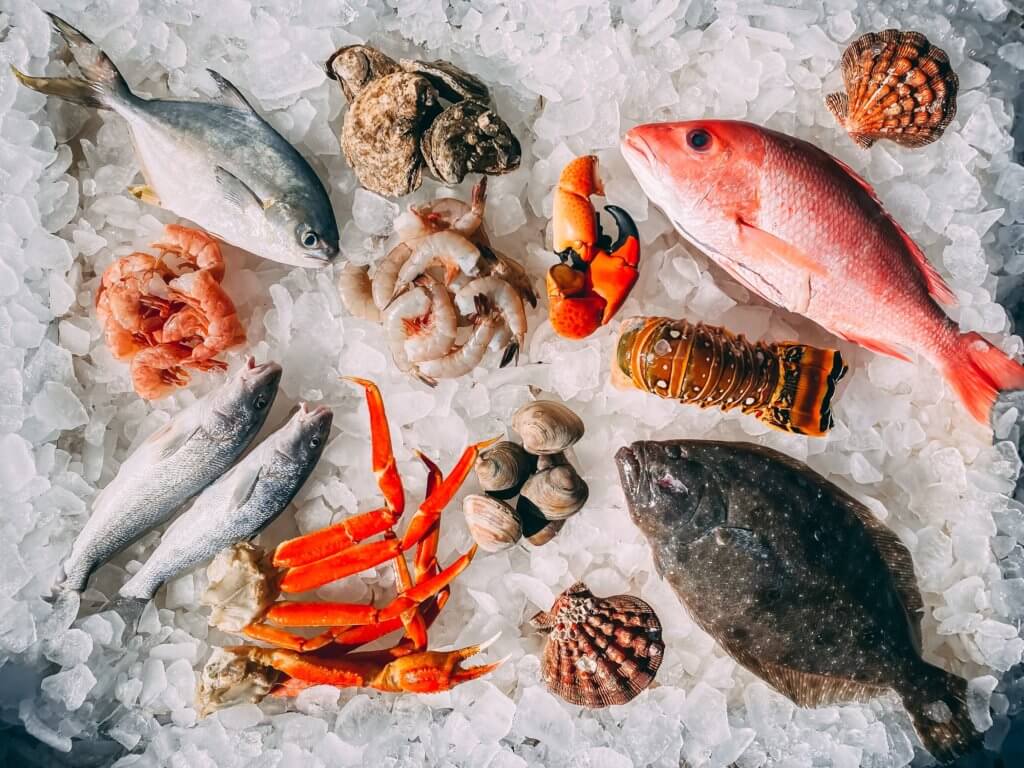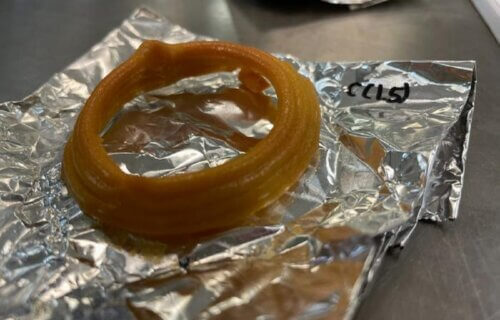SAN FRANCISCO — A 3D printer is helping scientists create vegan seafood that closely resembles the appearance, taste, and texture of the real thing. Researchers successfully developed plant-based alternatives to salmon fillets, shrimp, and even calamari rings that they say not only taste delicious but also retain the nutritional qualities of genuine seafood.
While vegan alternatives for beef, pork, and poultry are already popular, there’s a pressing need for more seafood substitutes due to unsustainable fishing practices, which deplete supplies and damage the environment.
Replicating the taste and nutrition of authentic seafood with plant-based ingredients has always been challenging. However, a team in Singapore has crafted a unique ink from microalgae protein and mung bean protein. This innovation has led to the creation of air-fryable calamari rings, which serve as a proof of concept.
“We need to be prepared from an alternative protein point of view, especially here in Singapore, where over 90% of the fish is imported,” says Poornima Vijayan, a graduate student from the National University of Singapore (NUS), in a media release.

Oceans, while vast, are not inexhaustible. Overfishing has significantly impacted many fish populations. The researchers highlight that issues like overfishing, contamination from heavy metals and microplastics, and ethical dilemmas have driven consumers towards plant-based options. Despite this shift, suitable vegan seafood alternatives remain scarce.
The researchers state that crafting plant-based seafood that mirrors the nutritional content, distinct textures, and delicate flavors of fish is particularly challenging.
“Plant-based seafood mimics are out there, but the ingredients don’t usually include protein. We wanted to make protein-based products that are nutritionally equivalent to or better than real seafood and address food sustainability,” says NUS Professor Dejian Huang, the study’s principal investigator.
The team utilized legume protein to craft better seafood alternatives. Using a food-grade 3D printer, they replicated the flaky texture and mouthfeel of fish by printing a protein-based ink layer by layer, enabling them to create diverse textures in a single product.
“We printed salmon filets with protein from red lentils because of the protein’s color, and we’ve printed shrimp. Now, we wanted to print something else interesting with the potential for commercialization — calamari rings,” Prof. Huang elaborates.

The team combined proteins extracted from microalgae, known for their fish-like taste, and mung beans with plant-based oils rich in omega-3 fatty acids. The resulting vegan paste closely matched the nutritional profile of actual calamari rings, which, after undergoing specific temperature modifications, the 3D printer turned into rings.
After assessing their taste, aroma, and appearance, the team discovered that while 3D printing provided the desired structure and texture, the vegan seafood still needs to be cooked, much like traditional seafood. Initial taste tests were promising, with the team noting the “acceptable” flavor and texture.
Though this plant-based version may cater to those allergic to mollusks, such as squid, Prof. Huang emphasizes that potential allergic reactions to the new ingredients remain unknown.
“I don’t think that there are many known cases of allergies to microalgae proteins or mung bean proteins. But we don’t know yet because it’s still a new combination.”
The team’s next step is to create multiple prototypes and explore the feasibility of mass production.
“I think people will like our plant-based mimic. From a novelty perspective, it has that seafood taste but comes from only sustainable plant-based sources,” concludes Vijayan.
The researchers presented their findings at the latest meeting of the American Chemical Society (ACS) in San Francisco.
You might also be interested in:
- A Dietitian’s Take: Top 3 Nutrient-Packed Seafood Choices
- Best Fast Food Vegan Options: Top Healthy Menu Items Most Recommended By Experts
- Futuristic food: Scientists can now 3D print healthier chocolate
South West News Service writer Stephen Beech contributed to this report.


I am not quite to the point of starving so bad I would decide to eat this kind of ultra processed garbage.
Vegan stupidity is highlighted by their gullibility to eat all this kind of stuff and feel smug and superior. Then they turn around and say vaccines are worthless because they haven’t been tested.
What’s the point in creating something that “almost tastes like the real thing”?
If you’re craving the real thing, your body is telling you it needs the nutrients found in the real thing. Just eat the real thing.
These are the kind of people who breed disease to the human race,why would some one in their normal mind Leave Wild caught fish from the sea that has much more health benefits to the body these people need to go to Alaska to get some natural fish to clear their sick minds